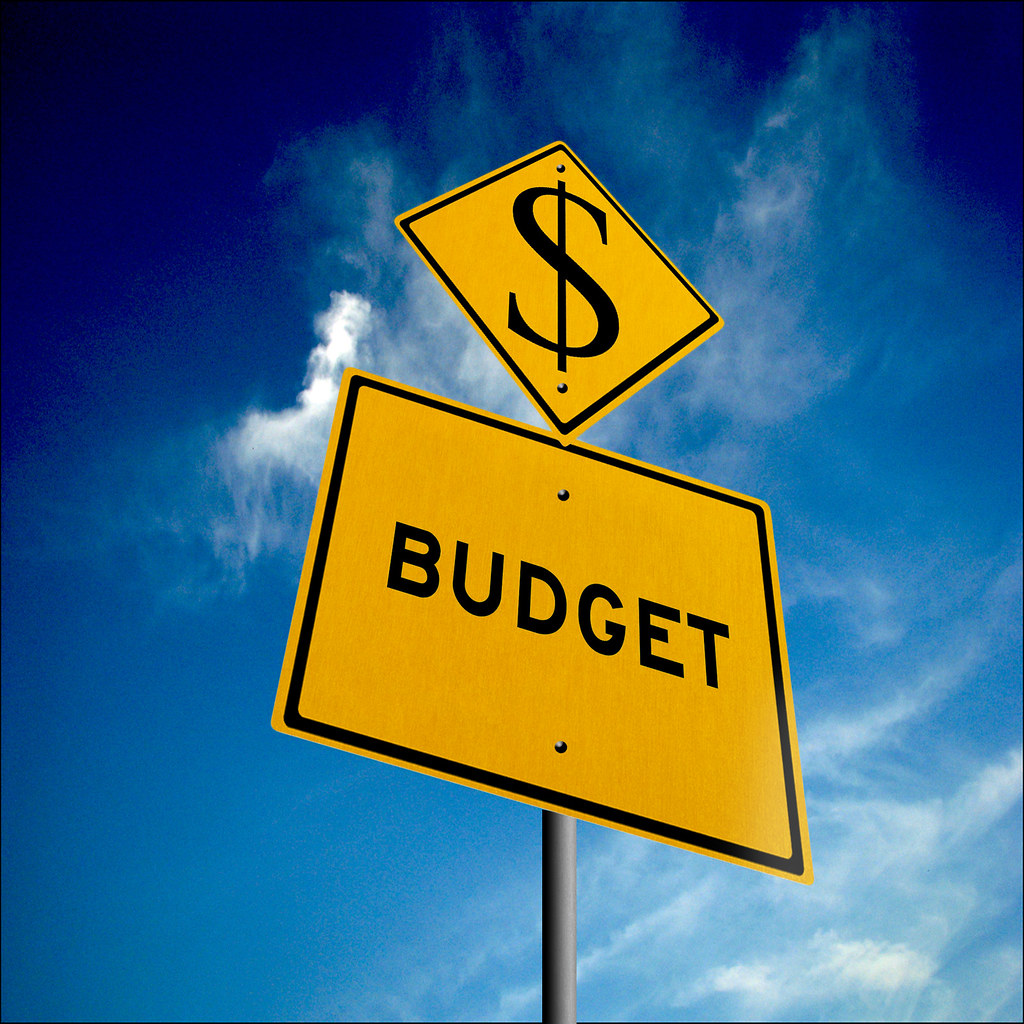
In an increasingly complex financial landscape, the ability to manage one’s money effectively stands as a cornerstone of personal and professional success. Budgeting, far from being a restrictive exercise, is a powerful strategic tool that empowers individuals and organizations alike to gain clarity, achieve ambitious goals, and navigate economic uncertainties with confidence. It’s about taking proactive control, making informed decisions, and shaping a financial future rather than merely reacting to it.
For many, the concept of budgeting can seem daunting, conjuring images of tedious spreadsheets and endless calculations. However, modern approaches and readily available tools have transformed budgeting into an accessible and dynamic process. Whether you are aiming to pay off debt, build savings, plan for major purchases, or simply reduce financial stress, a well-constructed budget is your indispensable guide. It provides a clear picture of your financial inflows and outflows, revealing where your money truly goes and, more importantly, where it could be better directed.
This in-depth exploration will unveil 10 essential strategies and insights into budgeting, moving beyond conventional wisdom to reveal the systems and principles that drive genuine financial mastery. We will delve into various methodologies, from established rules-based frameworks to highly personalized systems, equipping you with the knowledge to craft a budget that not only fits your unique circumstances but also propels you toward your most significant financial aspirations.

1. **The Fundamental Purpose of Budgeting: What It Is and Why It’s Crucial**A budget is, at its core, a meticulously designed plan that enables you to manage your money with intention and precision. It functions as a financial blueprint, offering a comprehensive overview of how much money enters your accounts each month versus how much departs. This clear visualization is fundamental to identifying specific areas where opportunities for saving and optimization exist. It’s about creating a narrative for your finances, rather than letting the numbers tell their own, often chaotic, story.
The significance of maintaining a budget extends far beyond mere arithmetic; it profoundly impacts your financial well-being. Fundamentally, it empowers you to take decisive control of your money, ensuring that every dollar serves a purpose aligned with your broader financial objectives. This proactive stance means you are dictating where your money goes each month, eliminating the common dilemma of wondering where it all disappeared.
Furthermore, a robust budget is an instrumental tool for cultivating savings and strategically reducing debt. By meticulously tracking income and expenses, it pinpoints areas where spending can be curtailed, freeing up capital to fuel ambitious financial goals such as accumulating an emergency fund, making a down payment on a home, or investing for retirement. This deliberate allocation of funds is the engine that drives financial growth and stability.
Crucially, a well-managed budget acts as a powerful antidote to financial stress, a pervasive concern for many individuals. By providing a clear, actionable roadmap for your money, it instills a profound sense of control and predictability. This transparency alleviates anxiety, allowing you to make informed financial decisions with greater peace of mind and confidence in your financial trajectory.
Read more about: The Great American Road Trip Renaissance: Why Highways Are Conquering the Skies in 2025

2. **Essential Financial Data for Budget Preparation: Your Income, Fixed Expenses, Variable Costs, and Debts**
Embarking on the budgeting journey requires a thorough inventory of your current financial landscape. Before you even begin to allocate funds or choose a specific budgeting method, gathering accurate and complete financial information is absolutely paramount. This initial data collection phase lays the robust foundation upon which your entire budget will be built, ensuring its accuracy and effectiveness from the outset. Without precise figures, any budgeting effort risks being an exercise in futility, leading to frustration rather than financial clarity.
The first critical piece of information you will need is your take-home pay, which represents your monthly income after all taxes and deductions have been applied. Your pay stub is typically the most convenient and reliable source for this figure, providing a definitive insight into the actual funds you have available to budget each month. This net income is the starting point for all subsequent financial planning.
Next, meticulously identify your fixed expenses. These are the financial commitments that remain consistently the same month after month, providing a predictable component to your spending. This category includes essential items such as housing payments, utility bills, insurance premiums, regular debt or loan installments, childcare costs, and recurring memberships. Account statements are invaluable resources for locating these recurring charges and confirming their precise amounts, ensuring no fixed obligation is overlooked.
Equally important are your variable costs, which, by their nature, fluctuate from one month to the next. This category encompasses expenses like groceries, gasoline, discretionary shopping, dining out, travel, and entertainment. Since these amounts are not static, you will need to review past transactions to formulate a realistic estimate of your typical spending in each area. Analyzing several months of bank statements can help reveal spending patterns and establish a reasonable baseline for these flexible expenditures.
Finally, a comprehensive understanding of your outstanding debts, including their associated interest rates, is essential. This includes credit card balances, medical debts, personal loans, and any other liabilities. Having all of this detailed debt information readily accessible will streamline the process of calculating your budget, making it significantly smoother and far more accurate. This holistic view ensures that your budget addresses both immediate spending and long-term financial obligations.

3. **The 50/30/20 Rule: A Balanced Spending Framework for Modern Finances**For those seeking a straightforward, yet highly effective, framework to guide their financial allocations, the 50/30/20 rule presents an elegant solution. This popular budgeting system, famously incorporated into tools like NerdWallet’s budget template, simplifies the complex task of dividing your income into distinct, manageable categories. It offers a structured approach to ensure that your financial priorities are always in focus, preventing impulsive spending from derailing your goals.
At its core, the 50/30/20 rule advocates for a specific distribution of your monthly take-home income. The largest portion, 50%, is designated for your fundamental “needs.” These are the non-negotiable expenses essential for daily living, such as housing, utilities, groceries, and transportation. Covering these needs first ensures that your basic living requirements are always met, providing a foundation of security.
The next segment, 30% of your income, is allocated to “wants.” This category encompasses discretionary spending that enhances your lifestyle but isn’t strictly necessary for survival. This includes activities like dining out, entertainment, hobbies, shopping for non-essential items, and vacations. This portion acknowledges the importance of personal enjoyment and rewards, striking a balance between necessity and leisure without overspending.
Finally, the remaining 20% of your income is strategically directed towards “savings and debt repayment.” This vital component is where your long-term financial health is cultivated, enabling you to build an emergency fund, contribute to retirement accounts, or aggressively pay down outstanding debts. This deliberate commitment to future financial security is a hallmark of responsible money management, laying the groundwork for wealth accumulation and debt freedom.
It is crucial to understand that while the 50/30/20 rule offers a clear structure, it is presented “less as a strict rule and more as an ideal to work toward.” This perspective acknowledges that individual circumstances vary, and while the framework provides an excellent target, flexibility in adaptation is often necessary. It serves as a guiding principle, encouraging conscious financial habits rather than enforcing rigid, unachievable mandates.
Read more about: Decoding the $300 Rule: Practical Steps to Finance Your Car Without Financial Strain

4. **Adapting to Financial Realities: The 60/30/10 Budget for Sustainable Living**While the 50/30/20 rule offers a widely adopted guideline, it may not universally fit every individual’s financial situation, particularly those grappling with lower incomes or residing in areas with a higher cost of living. Recognizing these diverse economic realities, the 60/30/10 budget emerges as a practical and more accommodating alternative, designed for those who still desire structured spending guidance but find the 50/30/20 breakdown a stretch. This method offers a realistic pathway to financial stability by adjusting the allocation to better suit immediate needs.
This budgeting framework reconfigures the distribution of income, dedicating a larger proportion to essential needs and a slightly smaller, yet still significant, amount to savings. Specifically, the 60/30/10 budget allocates 60% of your take-home income towards “needs.” This increased allowance provides greater flexibility for covering fundamental expenses like rent, mortgage payments, utilities, and groceries, which can consume a larger share of income in challenging economic environments or for lower earners. It acknowledges that sometimes, more of your income must simply go towards keeping the lights on and food on the table.
The “wants” category remains consistent with the 50/30/20 rule, with 30% of your income earmarked for discretionary spending. This allows individuals to still enjoy life’s pleasures and maintain a sense of balance, even when a larger portion of their income is dedicated to essentials. The ability to indulge in some personal enjoyment, within reasonable limits, is often key to the long-term sustainability of any budget, preventing feelings of deprivation.
The primary adjustment in the 60/30/10 model is seen in the “savings and debt repayment” allocation, which is set at 10% of your income. While ideally, budgeters would strive to contribute more than 10% to savings, the reality is that such a commitment is not always feasible for everyone. This framework prioritizes covering essentials while still fostering a habit of regular saving, albeit at a more accessible rate. It is an acknowledgment that some saving is better than no saving, and that building momentum is critical.
Consider a practical example to illustrate the impact: if your monthly take-home pay is $3,000, the 60/30/10 budget would allocate $1,800 to needs, $900 to wants, and $300 toward savings. This contrasts with the 50/30/20 breakdown, which would designate $1,500 for needs, $900 for wants, and a more ambitious $600 for savings. This direct comparison highlights how the 60/30/10 budget offers a more attainable starting point for many, particularly those with modest incomes or significant cost-of-living burdens, enabling them to build a foundation of financial health without undue pressure.

5. **Achieving Total Financial Control: The Zero-Based Budgeting Method**For individuals who are determined to assert absolute command over their finances, or those who find themselves prone to overspending, the zero-based budgeting method offers an unparalleled level of specificity and intentionality. Unlike the broader guidelines provided by percentage-based frameworks such as the 50/30/20 or 60/30/10 rules, zero-based budgeting demands that every single dollar earned is assigned a precise purpose. The goal is to allocate all income until your budget literally reaches zero, ensuring no funds are left unaccounted for and every penny contributes to a financial objective.
This meticulous approach is particularly beneficial for those who are highly organized and analytical, or conversely, for impulse spenders who require strict boundaries to prevent financial leakage. The core philosophy of zero-based budgeting is that your income minus your expenses, savings, and debt repayments should equate to zero by the end of each budgeting period. This doesn’t mean your bank account must hit zero, but rather that every dollar has been assigned a job on paper.
The process begins by meticulously listing all sources of income for the upcoming month. Following this, every anticipated expense, from the largest fixed costs like rent or mortgage to the smallest variable expenditures like entertainment or coffee, must be itemized. Crucially, discretionary spending and savings contributions are not afterthoughts; they are planned allocations just like any other bill. This active assignment of funds forces a deep engagement with where money is truly going.
Take, for instance, a monthly take-home pay of $3,000. With a zero-based budget, you wouldn’t just broadly categorize spending; you would specifically allocate funds to every single line item. This means assigning exact amounts to housing, groceries, specific debt payments, and savings goals. If, after covering all your essential categories, you discover you have $200 remaining unassigned, the zero-based method dictates that this money, too, must be given a purpose. Perhaps it goes towards an extra debt payment, a special savings goal, or even an intentional allocation for dining out or entertainment, but it cannot simply float unassigned.
This granular level of planning fosters an acute awareness of your cash flow, drastically reducing the likelihood of unconscious spending. It transforms budgeting from a passive tracking exercise into an active decision-making process, ensuring that your financial resources are always deployed with deliberate intent. While it demands more time and attention upfront, the clarity and control gained from zero-based budgeting can be profoundly empowering, leading to significant financial progress and a clearer understanding of your monetary habits.
Read more about: Mastering Your Money: An In-Depth Guide to Personal Budgeting for Financial Control and Future Security

6. **Tactical Spending Control: The Cash Envelope System for Impulse Managers**Building upon the principle of intentional allocation, the cash envelope budget system offers a tangible and highly effective method for managing spending, particularly for those who struggle with impulse purchases. While sharing conceptual similarities with zero-based budgeting in its focus on assigning every dollar a role, the envelope system translates this abstract concept into a physical, hands-on practice. This makes it an ideal tool for individuals who benefit from visual and tactile cues to regulate their spending behavior.
The essence of the cash envelope system lies in its directness. At the beginning of each budgeting period, you allocate a specific, predetermined amount of money to each of your spending categories. Crucially, these allocated funds are then physically separated into individual envelopes—either actual physical envelopes or their digital equivalents through a budgeting app. This creates distinct, visible limits for each area of your expenditure, fostering a clear understanding of how much is available for a given purpose.
Once the cash is placed into its respective envelope, that money becomes the sole resource for that particular spending category for the entire month. The cardinal rule of the system is simple yet profoundly impactful: “Once the envelope is empty, you can’t spend any more” on that specific category. This hard stop acts as an immediate and undeniable deterrent to overspending, eliminating the possibility of dipping into funds meant for other purposes or accumulating new debt without conscious awareness.
Imagine you have a monthly take-home pay of $3,000 and, following your budget plan, you’ve designated $100 for dining out. With the cash envelope system, you would physically place $100 into an envelope labeled “Dining Out.” If you’ve already spent $90 from that envelope throughout the month, and a friend invites you to dinner, a quick glance at your remaining $10 in the envelope provides an undeniable financial reality check. Faced with only $10, you would instantly know to adjust your plans, perhaps by skipping the dinner out or choosing a less expensive option, thereby preventing an unintended overspend.
This system transforms spending from an abstract digital transaction into a concrete, finite experience. It forces a pause before purchases, encouraging more thoughtful financial decisions and significantly curbing impulsive habits. For those who find credit cards too easy to swipe or digital banking too abstract, the tactile nature of the cash envelope system can be a powerful ally in regaining and maintaining spending control.
7. **Prioritizing Future Wealth: The Pay-Yourself-First Budgeting Approach**For many, the traditional budgeting sequence involves paying bills first, then discretionary spending, and finally, whatever is left over (if anything) goes into savings. The pay-yourself-first budgeting system, also aptly known as reverse budgeting, fundamentally inverts this conventional order, placing long-term financial goals at the absolute forefront of your financial priorities. This method is an ideal system for individuals who are driven to build wealth and secure their financial future but may not wish to meticulously track every single penny in the interim.
The core philosophy of pay-yourself-first is remarkably straightforward yet immensely powerful: immediately after receiving your income, you prioritize tucking away money into savings, investments, and debt repayment before any other expenses are considered. This ensures that your financial future is consistently nurtured, making wealth accumulation an automatic and non-negotiable part of your financial routine, rather than a residual activity contingent on what remains after all other spending. It effectively removes the temptation to spend money that should be saved.
This approach particularly resonates with individuals who are focused on achieving significant long-term objectives, such as building a substantial emergency fund, contributing to retirement accounts like a 401k or IRA, investing in the stock market, or saving for major life milestones like a home purchase or children’s education. By automating these contributions at the very beginning of your financial cycle, you guarantee consistent progress towards these goals, bypassing the psychological hurdle of deciding whether or not to save.
Consider the practical application with a monthly take-home pay of $3,000. The very first action you would take upon receiving these funds is to stash, for example, $300 into your IRA and allocate another $100 to your emergency fund. Only after these critical future-focused allocations have been made would you then proceed to budget for your remaining expenses, such as bills, groceries, and discretionary spending. The beauty of this system is that once your “future self” has been paid, the remaining funds can then be budgeted with greater freedom and less meticulous tracking than, for instance, a zero-based or envelope system would demand.
While this method empowers a less granular approach to everyday spending, it doesn’t imply a complete disregard for financial prudence. Rather, it assumes that by securing your most important long-term goals first, the pressure to micromanage every subsequent dollar is significantly reduced. This strategic prioritization instills robust saving habits and fosters a mindset of continuous investment in your financial future, proving that consistent contributions, even if moderate, can lead to substantial wealth accumulation over time. The emphasis is on consistency and automation, ensuring that your financial future is always a priority, not an afterthought.
Mastering the art of budgeting extends beyond merely selecting a method; it encompasses the practical steps of creation, diligent maintenance, and understanding its broader application in the corporate world. As we shift from individual strategies, our focus now turns to actionable guides for building and sustaining a robust financial plan, alongside an exploration of corporate budgeting and key strategies for enduring financial success.

8. **Creating Your Budget: A Step-by-Step Blueprint**Embarking on the budgeting journey requires a systematic approach, transforming what might seem like a complex endeavor into a series of manageable steps. The initial phase involves a thorough understanding of your current financial inflows and outflows, which serves as the bedrock for all subsequent financial decisions. This crucial foundational work ensures that your budget is grounded in reality, reflecting your actual economic situation.
To begin, the very first step is to accurately list all your income sources. This includes your normal paychecks, specifically your net income after taxes and deductions, as well as any supplementary earnings from side hustles, freelance work, or other ventures. Having a clear, comprehensive picture of all money flowing into your accounts is essential for establishing the total funds available to allocate within your budget.
Following income assessment, the next critical step is to meticulously itemize all your expenses. This necessitates reviewing past transactions, such as bank statements or online banking records, to capture both your fixed and variable costs. Fixed expenses, like rent or mortgage, utilities, and insurance premiums, provide predictable figures, while variable expenses such as groceries, gas, and entertainment require careful estimation based on historical spending patterns. Don’t forget to factor in debt payments and savings goals as intentional allocations.
Once income and expenses are fully documented, the process moves to a crucial calculation: subtracting your total expenses from your total income. In an ideal scenario, this calculation should result in zero or a positive surplus, indicating a balanced or healthy financial position. If a deficit emerges, it signals an immediate need to adjust spending or explore avenues for increased income.
Throughout the month, vigilant tracking of all your expenses, no matter how minor, is paramount to prevent accidental overspending and to ensure adherence to your budget. This continuous monitoring allows for real-time adjustments and reinforces financial discipline. As the month draws to a close, it’s vital to prepare a new budget for the upcoming period, incorporating lessons learned and adjusting for any anticipated changes, thereby fostering a cycle of continuous financial improvement.
Read more about: Your Essential Roadmap to Financial Control: 14 Practical Budgeting Strategies for Savvy Spenders
9. **Setting and Prioritizing Financial Goals**Budgeting is not merely about tracking money; it is fundamentally driven by purpose, and that purpose is articulated through clear, actionable financial goals. Whether your ambition is to accumulate funds for your children’s education, secure a home, or plan for a comfortable retirement, defining these objectives provides the necessary direction and motivation to stay disciplined with your spending and saving habits. These goals transform abstract numbers into tangible aspirations.
Once goals are established, the next critical task is to prioritize your expenses effectively. Not all expenditures hold equal importance, and a well-structured budget reflects this hierarchy. Prioritizing basic needs, often referred to as “The Four Walls,” such as housing, food, utilities, and transportation, ensures that essential living requirements are consistently met before discretionary spending is considered. This foundational allocation provides a sense of security and stability.
After essential needs are accounted for, you can then evaluate and allocate funds for other important commitments like insurance, debt repayments, and childcare. Subsequently, non-essential expenses, including personal spending, entertainment, and hobbies, can be budgeted within the remaining available funds. This structured prioritization helps in making conscious choices about where your money goes, aligning daily spending with long-term objectives.
For those seeking guidance on which financial goals to tackle first, adopting a structured plan can be immensely beneficial. For instance, prioritizing the establishment of an emergency fund before aggressively paying down debt (or vice versa, depending on the severity of debt interest rates) provides a clear roadmap. This strategic sequencing ensures that efforts are directed toward the most impactful areas, building momentum towards overall financial well-being.
Read more about: Decoding Mexico’s Financial Backbone: A Deep Dive into the NIF for Savvy Professionals

10. **Navigating the Unexpected: Building Flexibility into Your Financial Plan**Financial planning, while aiming for predictability, must also gracefully accommodate the inevitable curveballs life throws our way. An essential component of any resilient budget involves proactively planning for the unexpected, recognizing that unforeseen circumstances can swiftly derail even the most meticulously crafted financial strategies. These might include medical emergencies, sudden home repairs, or unexpected job transitions.
One of the most effective ways to build this critical flexibility is by establishing and consistently contributing to an emergency fund. This dedicated savings buffer acts as a financial safety net, providing a readily accessible source of funds to cover unforeseen expenses without resorting to high-interest debt or disrupting your primary budget allocations. It offers invaluable peace of mind, knowing you have resources to weather financial storms.
Moreover, a truly effective budget is not static; it possesses an inherent flexibility to adapt to changing economic conditions and personal circumstances. This means periodically reviewing your budget to account for seasonal costs, holiday spending, or quarterly expenses that don’t fit into a typical monthly cycle. Acknowledging these variations allows for proactive adjustments rather than reactive financial stress.
Flexibility also implies a willingness to adjust your approach and spending as needed until you discover the budgeting system that genuinely resonates with you. The “best budget is one that works for you,” and this often requires experimentation and refinement. This iterative process of review and adjustment is fundamental to long-term financial success, ensuring your budget remains a living, breathing document tailored to your evolving life.
Read more about: Beyond the Glitz: 15 Non-Negotiable Rules for New Celebrity Assistants Managing Star Travel and Life
Crucially, remember that you don’t have to navigate the complexities of financial management alone. If you find yourself overwhelmed by debt, struggling to gain control over your finances, or simply seeking guidance to optimize your monetary strategy, do not hesitate to seek help from trusted experts. Financial advisors and resources from reputable organizations can provide invaluable support and tailored advice, helping you take decisive control of your financial situation.
Ultimately, a budget is only effective if it is consistently tracked, flexible enough to plan for life’s variations, and regularly refined to meet evolving needs. While sticking to a budget can be challenging, a shift in attitude combined with discipline can transform it from a daunting task into an empowering practice. Embrace the journey of continuous financial improvement, and you’ll find yourself telling your money where to go, rather than wondering where it went, paving the way for lasting financial peace of mind and success.” , “_words_section2”: “1945





